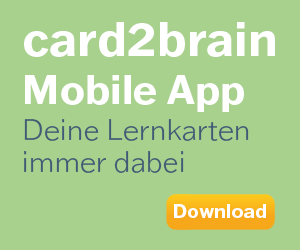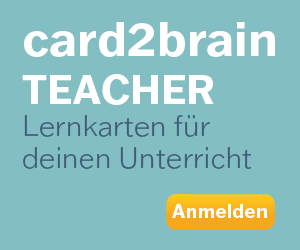jj
Kartei Details
| Karten | 360 |
|---|---|
| Sprache | Deutsch |
| Kategorie | Psychologie |
| Stufe | Grundschule |
| Erstellt / Aktualisiert | 02.01.2013 / 26.07.2022 |
| Weblink |
https://card2brain.ch/cards/entwicklungspsychologie2?max=40&offset=40
|
| Einbinden |
<iframe src="https://card2brain.ch/box/entwicklungspsychologie2/embed" width="780" height="150" scrolling="no" frameborder="0"></iframe>
|
3. Heredity and environment interaction:
The nature-nurture debate
3.1 Behavior genetics (Verhaltensgenetik)
- twin studies (identical vs. fraternal twins; eineiige vs. zweieiige Zwillinge)
- problem of possibly not identical environments
3. Heredity and environment interaction:
The nature-nurture debate
3.2 Heredity-environment correlations and the epigenetic view
- types of correlations (Genom-Umwelt-Passung)
3. Heredity and environment interaction:
The nature-nurture debate
3.2 Heredity-environment correlations and the epigenetic view
- epigenetic view (bidirectional interaction between heredity and environment)
Manipulationen: (1) Material:
- Spielzeugschlange, -krokodil, -hase und Plastikblume
- Video mit ängstlicher vs. nicht-ängstl. Reaktion eines Artgenossen
- keine Veränderung, wenn Modell nicht-ängstlich reagierte oder wenn Modell ängstlich auf Hase oder Blume reagierte;
- starke Angstreaktion, wenn Modell ängstlich auf Schlange oder Krokodil reagierte
Interpretation: Selektive Prädisposition zum Erlernen von Angst
4. Prenatal development 4.1 The course of prenatal development
- gestational age (time from conception; Gestationsalter)
- germinal period (first 2 weeks after conception; Keimperiode)
- embryonic period (2-8 weeks; Embryo)
- fetal period (from 9 weeks to birth after 40 weeks; Fötus)
4. Prenatal development 4.1 The course of prenatal development
- gestational age (time from conception; Gestationsalter
2. embryonic period (2-8 weeks; Embryo)
development of 3 cell layers:
a. endoderm (digestive and respiratory system) b. mesoderm (circulatory system, bones, muscles, excretory system,reproductive system) c. ectoderm (nervous system, sensory organs, skin)life-support systems:
a. amnion (Fruchtblase) b. umbilical cord (Nabelschnur) to placenta c. placenta (Mutterkuchen), placental barrier system
4. Prenatal development 4.1 The course of prenatal development
- gestational age (time from conception; Gestationsalter
3. Fetal Period (rom 9 weeks to birth after 40 weeks; Fötus)
- viable (lebensfähig) after 7 months
Prenatal development
4.4 Hazards (Risikofaktoren) to prenatal development
- search after teratogens (Teratogene; Fehlbildung verursachende Stoffe)
- prescription drugs (e.g., antibiotics, antidepressants, hormones)
- psychoactive drugs (e.g., caffeine, alcohol, nicotine, cocaine, methamphetamine,marijuana, heroin)
- incompatibility of parents’ blood types (rhesus factor positive vs. negative)
- maternal diseases (e.g. rubella [German measles], syphilis, genital herpes, HIV-infection)
- maternal diet and nutrition (e.g., mercury in fish)
- emotional states and stress (e.g., level of corticotrophin-releasing hormone)
- maternal age (best: 16-34 years; older: increasing risk of Down syndrome)
- paternal factors (e.g., sperm abnormalities due to toxic exposure, smoking, age)
- environmental hazards (e.g., radioactive or X-ray radiation, chemical pollutants)
Prenatal Development
4.7 Geschlechtsdifferenzierung des Fötus
- chromosomale Festlegung durch väterliches Spermium (X = weiblich, Y = männlich)
- weibliche Entwicklung als „Basismodell“
- Maskulinisierung durch zusätzliches Testosteron (besonders im 3.-6. Monat)
5. Birth and the postpartum period 5.1 The birth process
- birth (labor) stages
1. stage (12-24 hours for first births; otherwise mean of 8 hours)
- uterine contractions (Wehen; every 15-20 minutes)
- opening of the cervix (Muttermund)
- increase in frequency and intensity of contractions (every 2-5 minutes)
5. Birth and the postpartum period 5.1 The birth process
- birth (labor) stages
2. stage (1.5 hours for first births; otherwise mean of 45 min)
– move of baby’s head from uterus to birth canal – more frequent contractions (every minute) – baby completely emerges from birth canal
5. Birth and the postpartum period 5.1 The birth process
- birth (labor) stages
3. stage (afterbirth [Nachgeburt]; few minutes)
– placenta, umbilical cord and other membranes expelled
5. Birth and the postpartum period 5.1 The birth process
- childbirth settings
– hospital births (99% in USA) – home births (35% in the Netherlands) – help of obstetricians (Geburtshelfer in Klinik), midwifes (Hebammen) or doulas(„Begleiter“) – attendance of fathers (culturally diverse)
5. Birth and the postpartum period 5.1 The birth process
- methods of childbirth
– medication (analgesia, anesthesia, oxytocics) – natural and prepared childbirth – cesarean section (Kaiserschnitt) about 29% of all births in USA, different benefits and risks
5. Birth and the Postpartum period
5.4 the postpartum period
1. Emotional and personality development
1.1 Emotional development
- biological foundation
- facial expression of emotions
- basic emotions (like happiness, surprise, anger, fear) culturally universal
1. Emotional and personality development
1.1 Emotional development
- cultural differences in display rules
cultural differences in display rules?
1. Emotional and personality development
1.1 Emotional development
- emotional expression as social interaction
- importance of reciprocal (synchronous) interaction
- stranger anxiety (Fremdeln; from 6-12 months, peak with 9 months; individual differences and context effects)
- separation protest (peaks with 13-15 months)
- social referencing (13-24 months)
- emotional regulation and coping (= ability
1. Emotional and personality development
1.2 Temperament
- different categorizations (like easy, difficult, and slow-to-warm-up child)
- inherited basis
- effects of gender and culture
- goodness of fit (between child’s temperament and environmental demands)
2. Attachment
2.1 What is attachment?
- Bowlby’s attachment theory (1969, 1989)
- biological basis to keep caregiver nearby (increases survival rate)
- internal working model of the caregiver
2. Attachment
2.2 Individual differences in attachment
- early attachment styles & evaluation
- early attachment styles may foreshadow later functioning
- evaluation
3. Social contexts 3.1 The family
- transition to parenthood
- reciprocal (bidirectional) socialization












